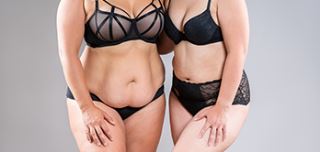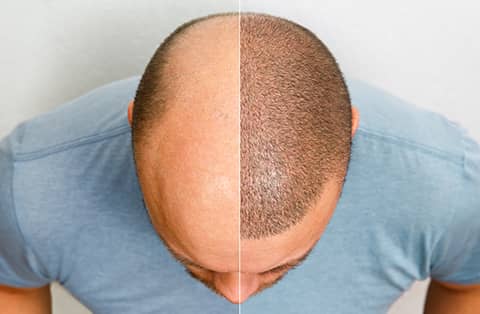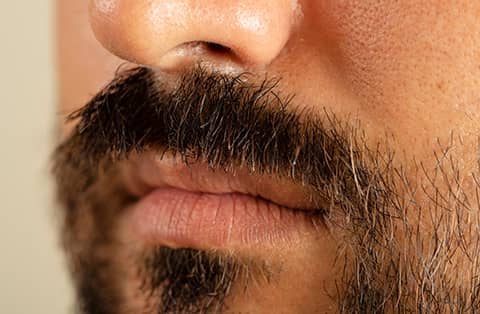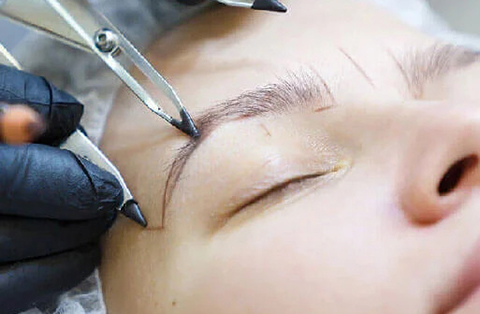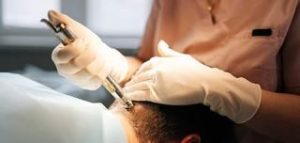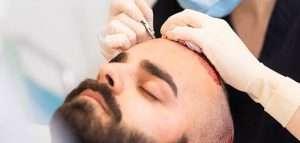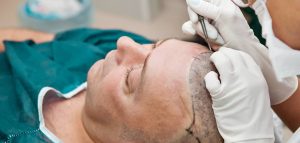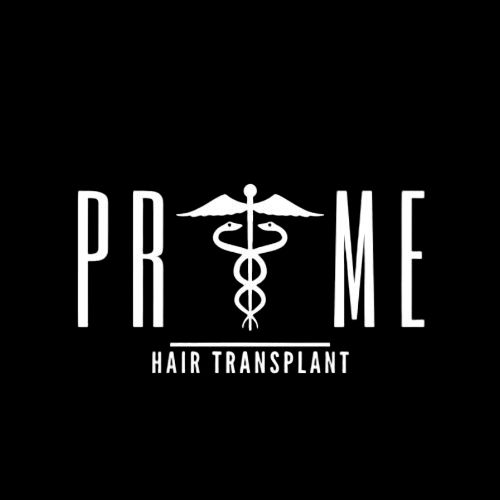Struggling with an apron belly and seeking a flatter, more toned stomach? You’re not alone. This common issue, often caused by factors like weight gain, pregnancy, or genetics, leads to excess skin and fat hanging from the lower abdomen. It can affect both your confidence and comfort.
The good news is that there are effective ways to reduce or eliminate an apron belly. From lifestyle changes to medical treatments, this article will explore the causes and provide practical solutions to help you regain a slimmer, firmer midsection.
Keep reading to discover the best options for achieving a smoother, more contoured stomach.
What is an Apron Belly?
An apron belly, also known as a pannus or abdominal panniculus, refers to the excess skin and fat that hangs down from the lower abdomen, resembling an apron. It can occur after significant weight gain, pregnancy, or due to aging. This extra tissue can extend over the pubic area and even beyond, depending on its severity.
An apron belly not only affects the appearance of the stomach but can also cause discomfort. It can lead to issues like skin irritation, rashes, or infections in the folds of the skin. Many individuals seek solutions to reduce or remove it for aesthetic and health reasons.
Signs and Symptoms of an Apron Belly
Signs and symptoms of an apron belly include the following:
Excess skin and fat: A noticeable overhang of skin and fat on the lower abdomen, resembling an apron, is the primary sign.
Skin irritation: The skin under the fold can become irritated due to constant rubbing, leading to redness, rashes, or chafing.
Fungal or bacterial infections: Moisture trapped in the skin folds can create an environment for infections, leading to itching, odor, or sores.
Lower back pain: The extra weight of an apron belly may strain the lower back, causing discomfort or pain.
Hygiene difficulties: Cleaning the area under the fold can be challenging, increasing the risk of skin issues and infections.
These symptoms may vary in severity, depending on the size of the apron belly.
Apron Belly Grades
Apron belly can be classified into different grades based on the size and extent of the overhanging tissue. These grades range from mild cases, where the excess skin hangs just over the pubic area, to more severe cases, where the skin extends down to the thighs or even beyond. Each grade affects the body differently, and the treatment options may vary.
For more detailed information, explore our Apron Belly Grades page, where we cover each grade and the specific challenges they present.
What Causes an Apron Belly?
An apron belly is typically caused by a combination of factors that lead to excess fat and skin in the lower abdomen. Common causes include:
Weight gain: Rapid or significant weight gain can stretch the abdominal skin and lead to fat accumulation.
Pregnancy: The stretching of the abdominal muscles and skin during pregnancy can result in a permanent overhang, especially after multiple pregnancies.
Genetics: Some individuals are more prone to developing excess fat in the lower abdomen due to their genetic makeup.
Aging: As skin loses elasticity with age, it may not bounce back after weight changes or pregnancy, leading to sagging.
These factors often work together, contributing to the development of an apron belly.
What Are the Risks of Having an Apron Belly?
Having an apron belly can pose several health and quality-of-life risks, including:
Skin infections and rashes: The fold of skin can trap moisture, leading to bacterial or fungal infections, rashes, and chafing.
Lower back pain: The extra weight of the apron belly can strain the lower back, causing discomfort and pain over time.
Hygiene difficulties: Keeping the area under the overhanging skin clean can be challenging, increasing the risk of skin issues.
Emotional distress: An apron belly can affect body image and self-esteem, leading to emotional or psychological distress.
These risks highlight the importance of addressing the condition for both health and well-being.
How Can You Get Rid of an Apron Belly?
Reducing or eliminating an apron belly often requires a combination of approaches tailored to individual needs. While diet and exercise are essential for overall fat loss, they may not always target loose skin or stubborn fat in the lower abdomen.
Surgical procedures offer more immediate results, but non-invasive lifestyle changes can also help manage the condition.
Diet and Exercise
A healthy diet and regular exercise are the first steps in reducing an apron belly. Focusing on balanced meals with lean proteins, whole grains, fruits, and vegetables can promote fat loss.
Reducing sugar and processed foods also helps limit fat accumulation in the abdomen. Pairing this with consistent cardiovascular and strength-training exercises, like walking, swimming, or weightlifting, can burn calories and build muscle.
While these efforts may not completely eliminate an apron belly, they are essential for overall fat reduction and improved health.
Surgical Procedures
Surgical options are often the most effective and immediate solution for removing an apron belly, especially when excess skin and stubborn fat remain after weight loss or pregnancy. Below are the most common surgical procedures used to address an apron belly:
Abdominoplasty (Tummy Tuck)
An abdominoplasty, or tummy tuck, is the most popular surgical procedure for addressing an apron belly. It involves removing excess skin and fat from the lower abdomen and tightening the abdominal muscles. The procedure helps create a flatter, firmer stomach and improves muscle tone, which can be stretched or weakened due to pregnancy or weight fluctuations.
Procedure details:
The surgery typically involves a horizontal incision made just above the pubic area, allowing the surgeon to remove the overhanging skin and fat.
The abdominal muscles are then tightened, and the remaining skin is pulled down for a smoother, firmer appearance.
Recovery takes several weeks, and patients may need to wear compression garments to support healing. Scarring is common but can fade over time.
A tummy tuck offers long-lasting results if a stable weight is maintained after the procedure.
Liposuction
Liposuction targets localized fat deposits in the lower abdomen. Unlike a tummy tuck, liposuction focuses on fat removal and doesn’t address excess skin or muscle tightening. It’s often recommended for those who have good skin elasticity and muscle tone but struggle with stubborn fat in the apron belly area.
Procedure details:
The surgeon makes small incisions and uses a thin tube (cannula) to break up and suction out fat deposits.
Recovery is usually quicker than with a tummy tuck, though there may still be some swelling and bruising.
Liposuction is often combined with a tummy tuck to achieve a more comprehensive result, addressing both fat and skin concerns.
Panniculectomy
A panniculectomy specifically targets the removal of excess skin (the pannus) hanging from the abdomen. Unlike a tummy tuck, it does not involve muscle tightening or reshaping of the abdomen. It is a functional procedure often recommended for those experiencing significant discomfort, hygiene issues, or skin infections due to the hanging skin.
Procedure details:
The surgeon removes the excess skin and fat, typically with a horizontal incision across the lower abdomen.
It’s often covered by insurance if it’s medically necessary, particularly if skin infections or other health issues are present.
Recovery can take several weeks, with patients needing to follow post-operative care instructions to reduce the risk of complications.
Combined Procedures
In some cases, surgeons may recommend combining these procedures for optimal results. For example, a tummy tuck with liposuction can remove both fat and excess skin, while a panniculectomy may be paired with a tummy tuck to address both functional and cosmetic concerns.
Risks and Considerations
While surgical procedures offer more immediate and dramatic results, they do come with risks. These include:
Scarring: All surgeries leave scars, though they often fade over time and can be strategically placed.
Infection: Post-surgical infections can occur if wounds are not properly cared for during recovery.
Blood clots: In rare cases, blood clots can develop after surgery, particularly in the legs or lungs.
Anesthesia risks: Any surgery involving general anesthesia carries risks, including allergic reactions or breathing difficulties.
A consultation with a board-certified plastic surgeon is essential to understand these risks and determine the best approach based on your needs and health status.
Lifestyle Changes
In addition to diet and exercise, lifestyle changes can help manage an apron belly. Proper hydration, for example, supports skin elasticity and overall health. Maintaining a stable weight after weight loss is crucial to prevent the apron belly from worsening.
Good hygiene practices, like keeping the skin dry and clean, can help avoid rashes and infections. Wearing supportive clothing, such as compression garments, can also provide comfort and improve posture.
How Effective Are Non-Surgical Methods?
For many people, the idea of avoiding surgery to reduce an apron belly is appealing. Non-surgical methods, such as diet, exercise, and non-invasive treatments, can offer promising results, especially for those not ready or eligible for surgery.
While these methods may not produce dramatic, immediate changes, they can still improve the appearance of the abdomen over time.
Diet and Exercise Alone
Diet and exercise are the foundation of any fat loss strategy. A healthy diet focused on reducing calorie intake and incorporating nutrient-rich foods can lead to gradual fat loss across the body, including the abdominal area.
Exercise, particularly a mix of cardio and strength training, helps burn calories and build muscle, which can reduce overall body fat and slightly tighten the abdomen.
However, diet and exercise alone may not always be enough to fully eliminate an apron belly, especially when excess skin is involved.
These methods are most effective when the apron belly is primarily due to fat accumulation, rather than loose skin.
For people with a significant amount of excess skin, additional treatments may be necessary to achieve the desired results.
Non-Invasive Treatments
Non-invasive treatments are an option for those looking for targeted fat reduction without surgery. These treatments include:
CoolSculpting (Cryolipolysis): This technique freezes fat cells, causing them to break down and be naturally eliminated by the body. It’s a safe and effective option for reducing fat in localized areas like the lower abdomen, though it doesn’t address excess skin.
Radiofrequency (RF) Therapy: RF therapy uses heat to stimulate collagen production, tightening loose skin and reducing fat. It can be beneficial for those with mild to moderate skin laxity and small pockets of fat.
Ultrasound Fat Reduction: This method uses ultrasound waves to target and destroy fat cells, which are then naturally eliminated by the body. Similar to CoolSculpting, it’s effective for fat reduction but does not tighten skin.
While non-invasive treatments can help reduce fat, their results are often less dramatic compared to surgical procedures. These methods may require multiple sessions and are most suitable for those with mild apron belly issues.

